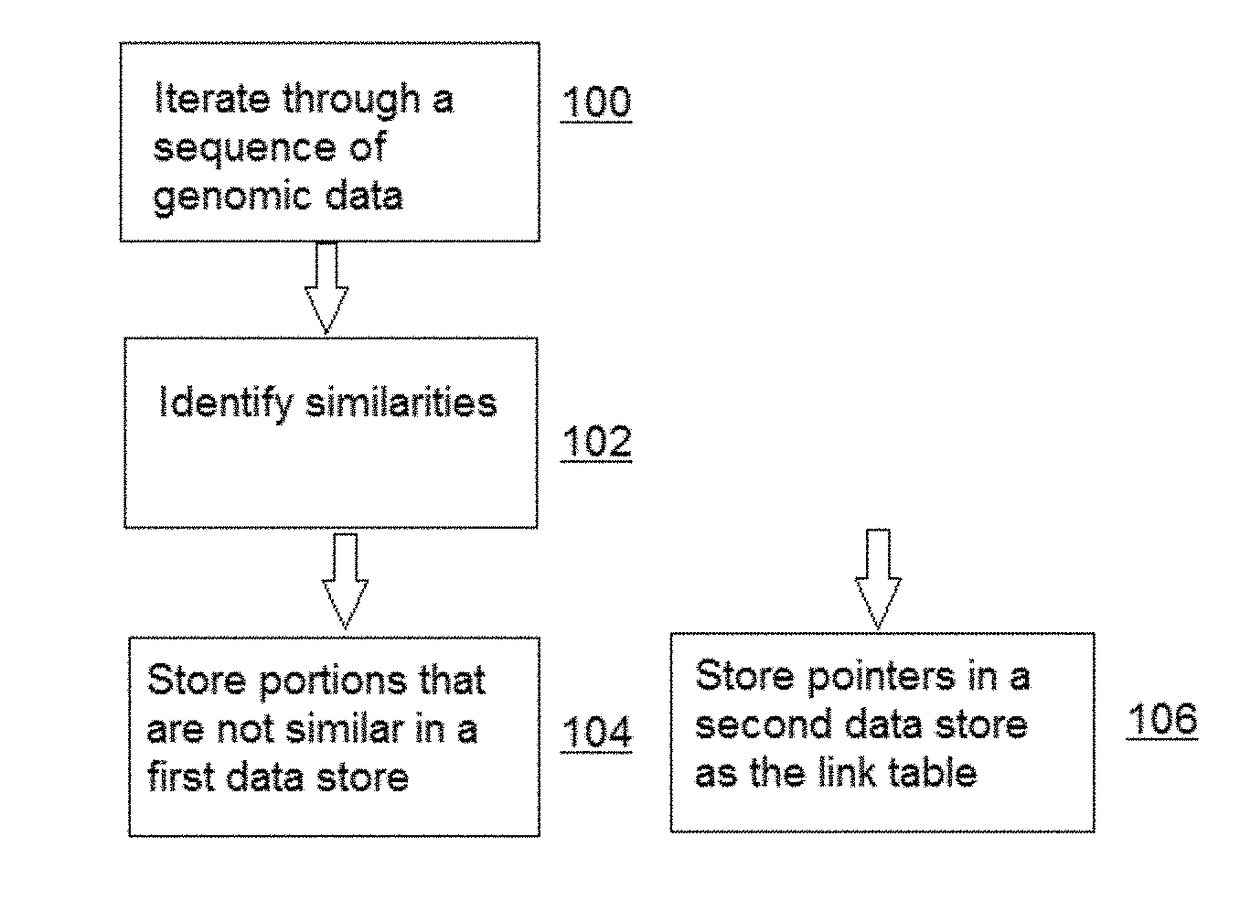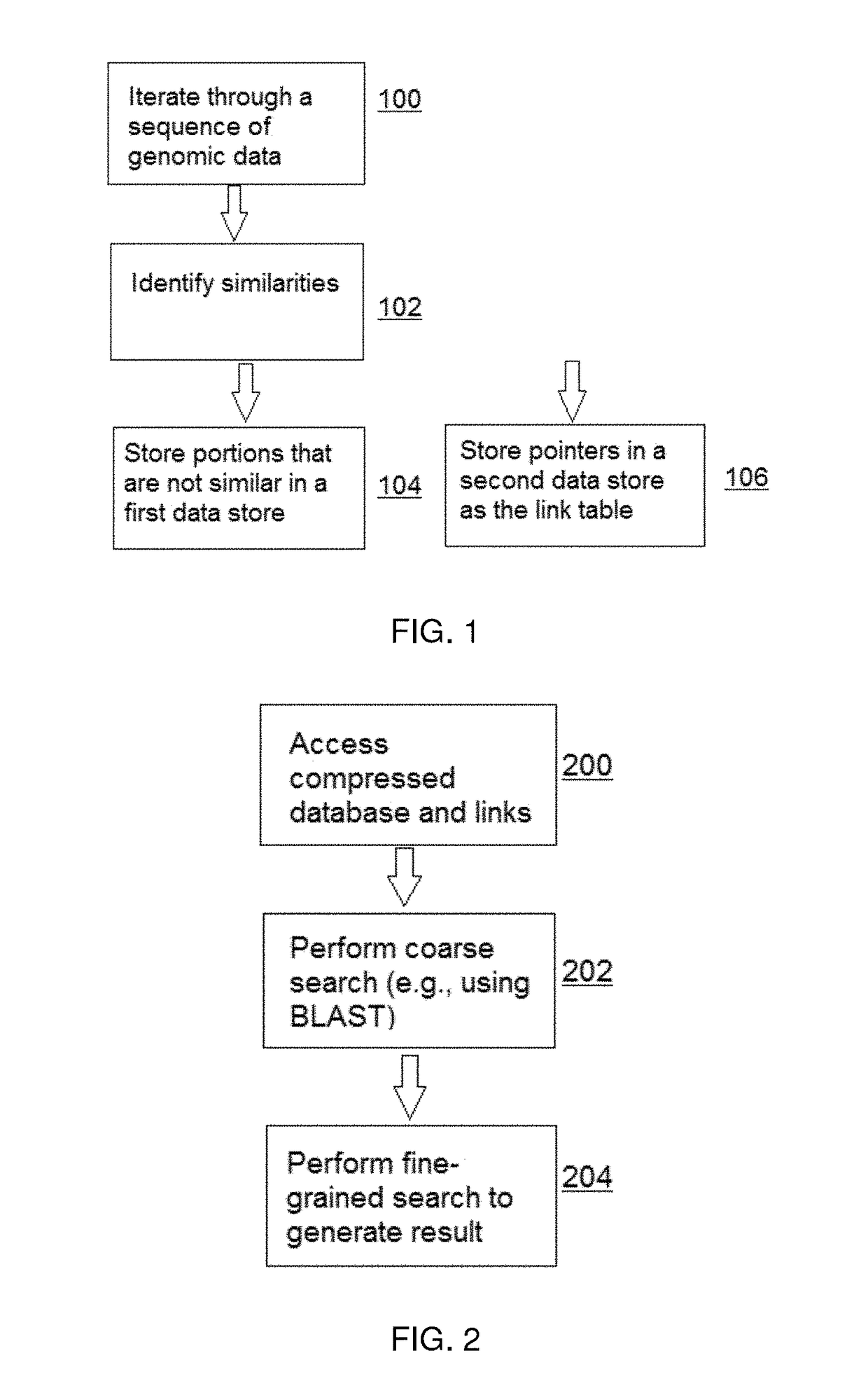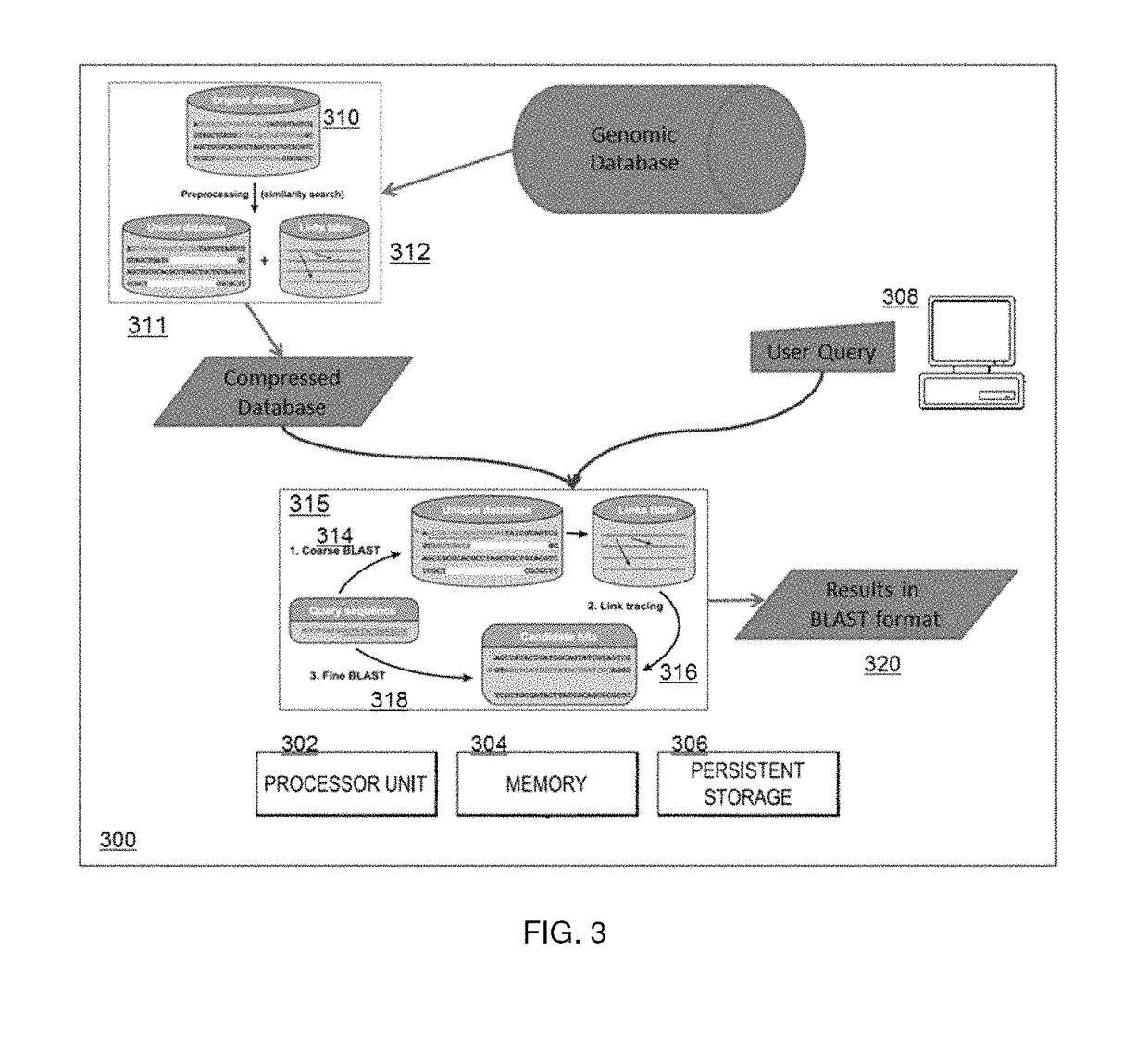Compressing, storing and searching sequence data
a sequence data and sequence technology, applied in the field of genomic data analysis, can solve the problems of large genomic libraries with additional structure, difficult to cope with large data sets, and high redundancy of large genomic libraries, and achieve the effects of not reducing the computational bottleneck
- Summary
- Abstract
- Description
- Claims
- Application Information
AI Technical Summary
Benefits of technology
Problems solved by technology
Method used
Image
Examples
Embodiment Construction
[0023]For purposes of description and illustration, the techniques herein are described in the context of compressing genomic sequence data, although the same approach may be used to compress, store and search other large data sets wherein sequences of data therein are similar and the amount of novel sequence information (for sequences being added) is comparatively modest.
[0024]In addition, the examples below are implemented using versions of the widely-used BLAST and BLAT algorithms. This is not a limitation, however. As is well-known, BLAST and BLAT search a genomic database to identify sequences that are similar to a given sequence. As will be described, the techniques of this disclosure use such algorithms, but only in a second phase. In particular, the “compressive algorithm(s)” of this disclosure involve two (2) distinct phases: (i) compressing the database, and (ii) searching the compressed data. The compression phase can be realized using various schemes; a preferred approac...
PUM
 Login to View More
Login to View More Abstract
Description
Claims
Application Information
 Login to View More
Login to View More - R&D
- Intellectual Property
- Life Sciences
- Materials
- Tech Scout
- Unparalleled Data Quality
- Higher Quality Content
- 60% Fewer Hallucinations
Browse by: Latest US Patents, China's latest patents, Technical Efficacy Thesaurus, Application Domain, Technology Topic, Popular Technical Reports.
© 2025 PatSnap. All rights reserved.Legal|Privacy policy|Modern Slavery Act Transparency Statement|Sitemap|About US| Contact US: help@patsnap.com



